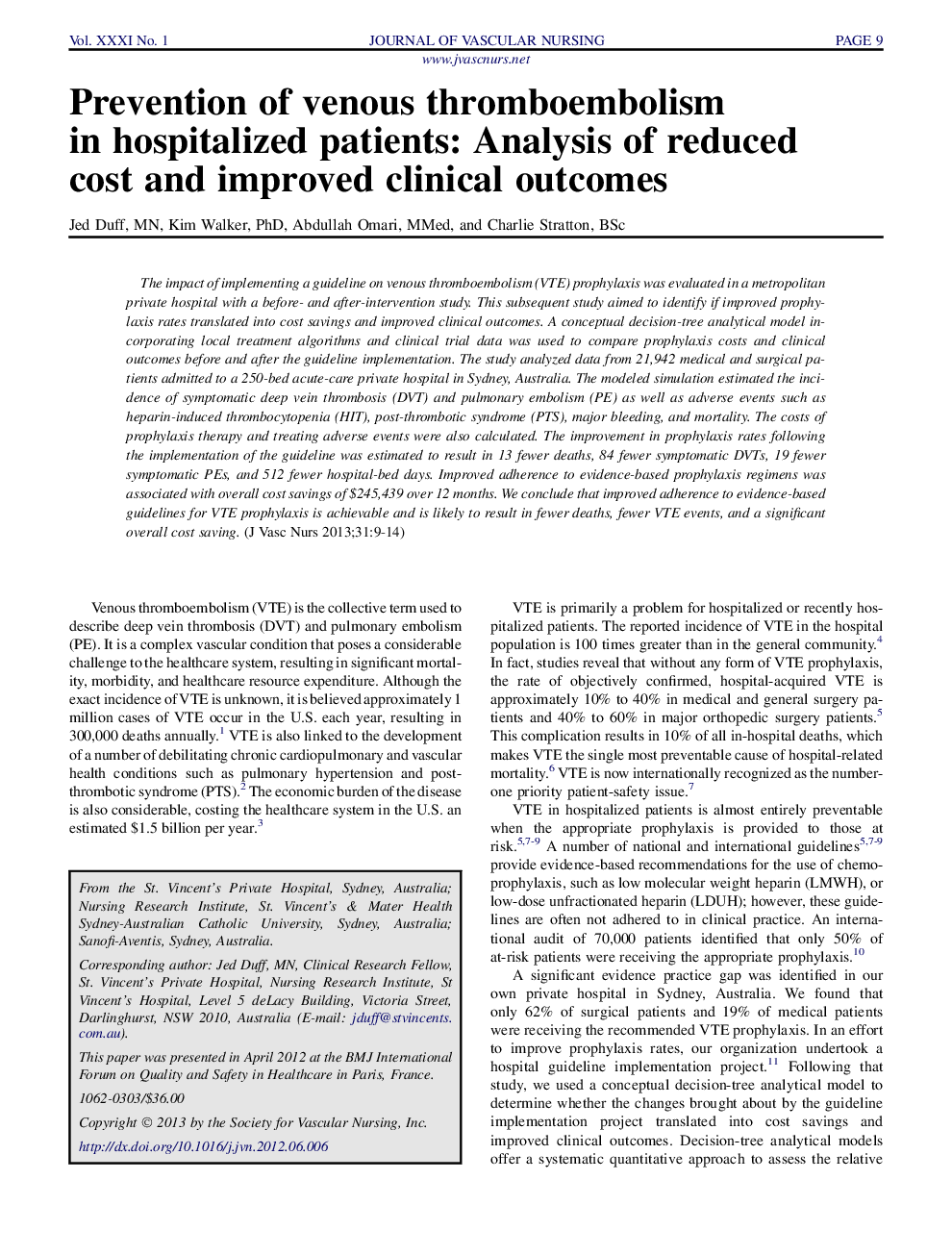| Article ID | Journal | Published Year | Pages | File Type |
|---|---|---|---|---|
| 2672077 | Journal of Vascular Nursing | 2013 | 6 Pages |
The impact of implementing a guideline on venous thromboembolism (VTE) prophylaxis was evaluated in a metropolitan private hospital with a before- and after-intervention study. This subsequent study aimed to identify if improved prophylaxis rates translated into cost savings and improved clinical outcomes. A conceptual decision-tree analytical model incorporating local treatment algorithms and clinical trial data was used to compare prophylaxis costs and clinical outcomes before and after the guideline implementation. The study analyzed data from 21,942 medical and surgical patients admitted to a 250-bed acute-care private hospital in Sydney, Australia. The modeled simulation estimated the incidence of symptomatic deep vein thrombosis (DVT) and pulmonary embolism (PE) as well as adverse events such as heparin-induced thrombocytopenia (HIT), post-thrombotic syndrome (PTS), major bleeding, and mortality. The costs of prophylaxis therapy and treating adverse events were also calculated. The improvement in prophylaxis rates following the implementation of the guideline was estimated to result in 13 fewer deaths, 84 fewer symptomatic DVTs, 19 fewer symptomatic PEs, and 512 fewer hospital-bed days. Improved adherence to evidence-based prophylaxis regimens was associated with overall cost savings of $245,439 over 12 months. We conclude that improved adherence to evidence-based guidelines for VTE prophylaxis is achievable and is likely to result in fewer deaths, fewer VTE events, and a significant overall cost saving.
